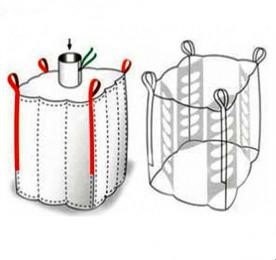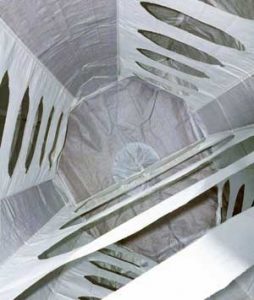Japanese bulk pack users have long preferred the shape of tubular bulk bags over cubic, round bags or baffle bags for many good reasons. After all, cylinders or tubes are great to handle high internal or external pressure. From soda cans to bullets, airplane fuselages, submarine bodies and even the basic structure of the International Space Station, the application is everywhere.
Let’s examine the main benefits of the tubular bulk bags:
- Improved sift and moisture resistance
Tubular construction eliminates side seams, joints and any other form of side stitching. With a coated fabric, this results in a sift-proof container capable of eliminating the need for costly and cumbersome inner film liners when handling powder-type commodities
- More cost-effective to purchase
Since the looms already weave the bulk bags fabric in tubular form, making tubular bags is much less labor intensive as it only involves adding the top and bottom panels, instead of stitching all side seams.
- Tubular bags minimize bulging when filled
Tubular bags, when filled, exert the same amount of inner hydrostatic pressure all along the wall of the bulk bags, resulting in a more uniform expansion of the bag and, therefore, less overall bulging. In some cases, this can result in a better alternative to shipping in marine containers – costly baffled cubic bulk bags that are very elaborate to make, or even the costlier containerized cubic bulk bags that require a baffled inner liner due to the powdered nature of the commodity.
The fabric comes out of the looms already in tubular form.
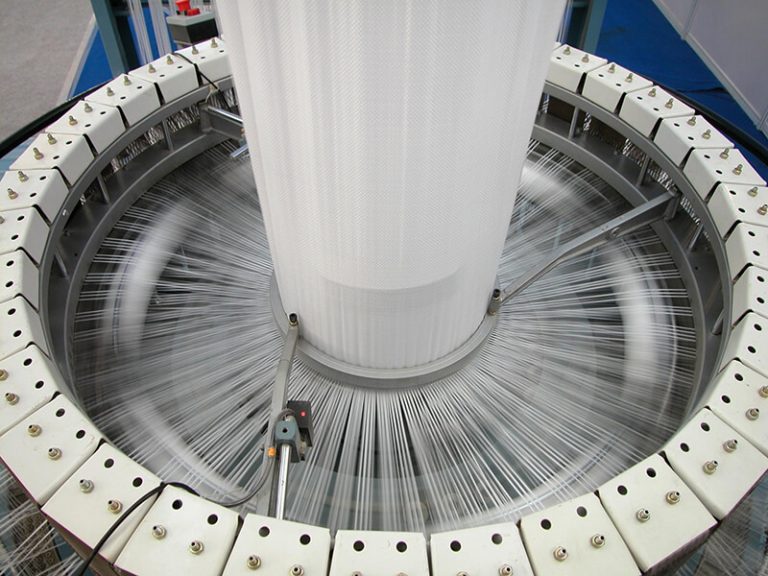
To convert the fabric into a tubular bag, only the top panel and the bottom panel require stitching.
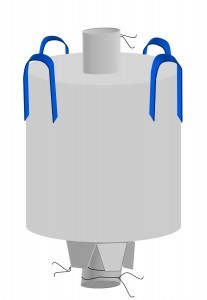
The forces’ dynamics in a tubular bulk bags
Force distribution is uniform.

The uniform forces inside of the tubular bulk bags result in smooth and stretch-free vertical sides.

The forces’ dynamics in a regular bulk bags
The diagonal forces are higher resulting in a non-uniform expansion of the cubic bulk bags.

The uneven forces result in numerous stress marks in the fabric of the bulk bags along the vertical seams and add a greater degree of bulging.
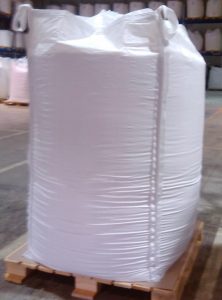
Tubular bulk bags minimize bulging along their entire height
Tubular bulk bags minimize bulging without the use of costly baffle bulk bags. The tubular bulk bags can be loaded into the container side by side without friction.
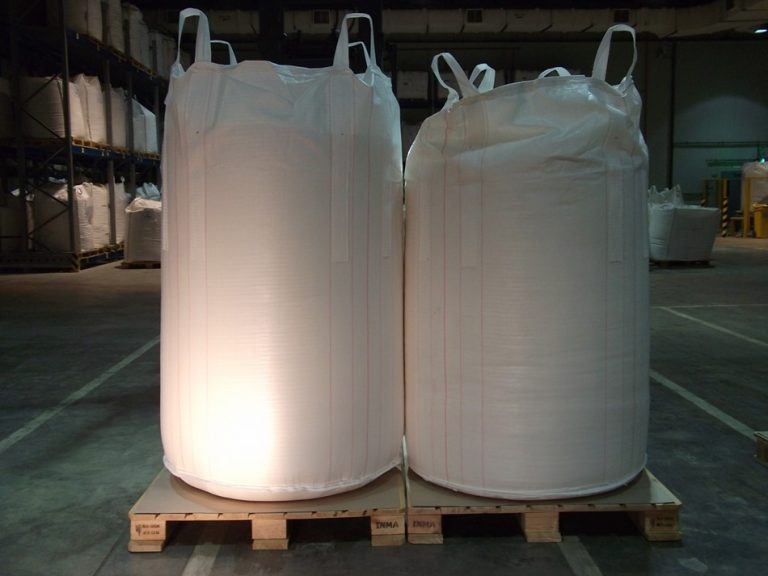
The uniform forces result in a smooth and minimal expansion of the bulk bags, along its entire vertical height.
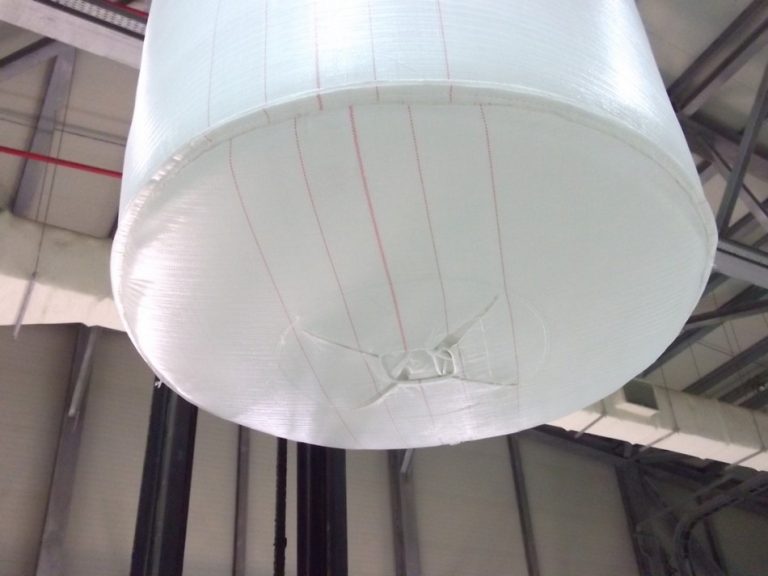
Regular bulk bags display significant bulging
Regular bulk bags present significant bulging across their entire height, once loaded.
Average bulging is estimated at 25% of the bulk bags overall perimeter.
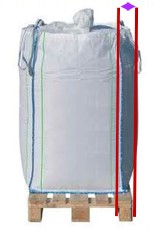
The high degree of bulging in regular bulk bags result in significant friction against each other when loading them into a marine shipping container. This over-bulging is conducive to bulk bags jamming in the container and their difficult removal once they arrive at the destination
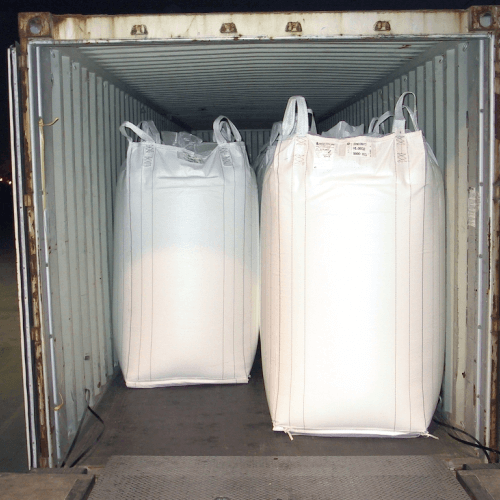
The intra bulk bags high friction from the over-bulging results in the pallet sometimes cutting into the side of the bags when unloading them from or into the container, respectively.

Pseudo-tubular bulk bags suffer the same over-bulging issues
The pseudo-tubular bulk bags consists of a tubular fabric body with a square top and bottom panels. It eliminates the excessive stress forces’ lines typical of a stitched regular bulk bags but still suffers from the same over-bulging issue because the top and bottom panels are not circular, but still square. These pseudo-tubular bulk bags still display significant over-bulging along its height.

The over-bulging of these pseudo-tubular bags results in their jamming in the marine shipping container, creating serious loading/unloading problems from the operational side and even potential spills when the pallets cut into the sides of the bulk bags.
Review Bulk-Flow’s solutions to discover the best options to transport your bulk solids in containers.
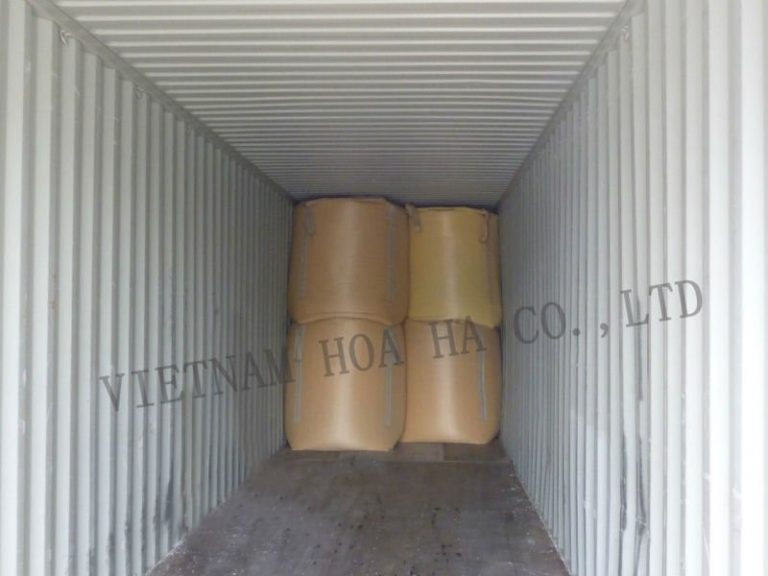
The costly solution for over-bulging baffled bulk bags
Baffle bulk bags, q-sacks or cubic bulk bags have been the traditional solution for bulk bags manufacturers to address the issues of over-bulging and payload maximization when containerizing bulk bags. These bulk bags limit the lateral expansion of the bulk bags through an intricate system of inner baffle panels and conform it into a cube for a better fit into a marine shipping container.
However, these technical advantages come at a cost:
- The intricate design makes it very labor intensive and, therefore, make it a costly bulk bag
- When handling powders, it requires the use of an even more expensive baffled inner-film liner
- Baffled inner-film liners are not as effective at containing the over-bulging due to the stretching nature of the film itself.
For some shippers though, Baffle Bulk Bags might be still justifiable when shipping them double stacked in 20′ containers, because 40′ containers are not available or significantly higher in cost.
Tubular bulk bags are the most cost-effective packaging solution for most shipping scenarios
If a shipper is transporting bulk bags in 40′ containers, tubular bulk bags will provide the company with the most cost-effective solution.
For instance, a shipper of biomass with a bulk density of approximately 42Lbs/ft3 (0.672) can use 41.5” diam x 92” H (105.5×229) tubular bags with a payload of 1,355 kg each and a cost in the range of $9-$10 each, compared to a regular sack in the range of $19-$20.
In Conclusion:
- Tubular bulk bags offer comparable shape retention (minimal over-bulging) at 50% of the purchase cost of baffle bulk bags.
- Tubular bulk bags offer far superior shape retention than regular bulk bags at up to 40% of the purchase costs
- Tubular bulk bags are faster to order due to their manufacturing simplicity.
- Tubular bulk bags can handle powder-type commodities, without the use of the expensive and cumbersome inner liner.

Find a partner for tailor-made tubular super-sacks for your bulk solids at Bulk-Flow.

